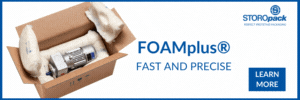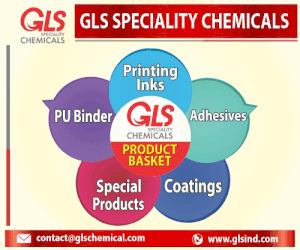
The printing ink and coatings industry is increasingly shifting towards sustainable practices, driven by environmental concerns and regulatory pressures. Water-based and solvent-less inks and coatings are leading this transformation, offering substantial environmental, economic, and performance benefits. This article explores the chemistry, advantages, challenges, and future directions of these eco-friendly technologies.
Water-based inks and coatings use water as a solvent, significantly reducing volatile organic compound (VOC) emissions compared to traditional solvent-based products. Solvent-less technologies, such as UV, LED and electron beam (EB) curing, eliminate the need for organic solvents altogether, offering zero VOC emissions and enhanced energy efficiency.
Table of Contents
Chemistry of water-based inks and solvent-less coatings:
Water-based inks and coatings
Colorants: Pigments or dyes that impart the desired color.
Resins: Typically acrylic-based and polyurethane dispersion (PUD)-based, these resins provide the backbone of the ink, ensuring adhesion to substrates and improving pigment grinding. Yansefu manufactures most of these resins to offer excellent resolubility and resistance properties. For barrier coatings and adhesives, specialized water-based emulsions and dispersion resins are required. Yansefu utilizes dedicated and specialized reactor systems to produce these resins.
Amines: Used to solubilize resins and keep the ink in a liquid state during printing.
Diluents: Mainly water, used to adjust viscosity.
Surfactants and additives: Defoamers, wetting agents, and other additives enhance performance characteristics, such as flow and stability.
Yansefu manufactures most of these resins to offer excellent resolubility and resistance properties. For barrier coatings and adhesives, specialized water-based emulsions and dispersion resins are required. Yansefu utilizes dedicated and specialized reactor systems to produce these resins.
Solvent-less coatings and adhesives
UV and LED coatings rely on a carefully selected array of raw materials to achieve their superior performance and eco-friendly profiles. These coatings primarily use oligomers, monomers, photoinitiators, and various additives. Oligomers, such as urethane acrylates, epoxy acrylates, and polyester acrylates, form the backbone of the coating, providing essential properties like flexibility, adhesion, and chemical resistance.
Monomers, typically acrylates or methacrylates, are used to adjust the viscosity and enhance the cross-linking density, thereby improving the mechanical strength and durability of the final cured film. Photoinitiators are crucial as they absorb UV or LED light to initiate the polymerization process, enabling rapid curing at low temperatures.
Additives, including stabilizers, adhesion promoters, and flow agents, are incorporated to fine-tune the coating’s performance, ensuring optimal application and finish. Together, these raw materials enable UV and LED coatings to offer fast curing times, low VOC emissions, and excellent protective qualities, making them a sustainable choice for various industrial applications.
Solvent-less lamination adhesives are formulated using a combination of advanced raw materials designed to ensure strong adhesion, flexibility, and environmental safety. The primary components of these adhesives include isocyanates and polyols, which react to form polyurethane when mixed. Isocyanates, such as methylene diphenyl diisocyanate (MDI), serve as the reactive hardeners that enable the cross-linking process. Polyols, often derived from polyester or polyether, provide the adhesive’s backbone, contributing to its flexibility, durability, and resistance to various environmental factors.
In addition to these core ingredients, catalysts are used to control the reaction rate and ensure consistent curing. Additives such as stabilizers, antioxidants, and UV absorbers are included to enhance the performance and longevity of the adhesive. The absence of solvents in these formulations eliminates VOC emissions, making solvent-less lamination adhesives an eco-friendly option that meets stringent environmental regulations while delivering high-performance bonding for flexible packaging applications.
Sustainability and health benefits
Reduced VOC emissions: Water-based and solvent-less technologies emit significantly fewer volatile organic compounds (VOCs), enhancing air quality and reducing health risks.
Compliant formulations: These water-based inks and coatings can be formulated to meet local and global regulatory requirements for applications such as indirect food and pharmaceutical packaging.
Improved workplace safety: The reduction or elimination of organic solvents creates a safer work environment.
Sustainability: Supports sustainable industrial waste management practices.
Fire safety: The absence of solvents in water-based inks and coatings, UV/LED coatings, and solvent-less lamination adhesives not only eliminates VOC emissions but also significantly enhances fire safety by reducing flammability risks.
Economic benefits
Cost savings: By using water instead of organic solvents for viscosity reduction, cost savings are realized, especially in situations where solvent recovery systems are not available.
Enhanced brand reputation: Companies adopting eco-friendly technologies appeal to environmentally conscious consumers, enhancing their market share and customer loyalty.
Regulatory compliance: Water-based and solvent-less technologies make it easier for companies to comply with stringent environmental regulations, reducing associated costs.
Performance advantages
Enhanced compatibility for paperization: Advances in water-based technologies have significantly improved performance, making them highly suitable for paperization – converting plastic packaging to paper packaging. These inks and coatings offer excellent adhesion and durability on paper substrates, facilitating a smoother transition from plastic to paper-based packaging solutions.
Ease of online applications during film manufacturing: Innovative formulations, such as those found in Yansefu’s products, have been developed to provide superior performance during the film manufacturing process. These advanced binders and resins ensure that water-based inks and coatings can be applied efficiently online, streamlining the production process and enhancing overall productivity.
Versatility and compatibility: Water-based and solvent-less technologies are versatile and compatible with a wide range of substrates and printing techniques. This compatibility is especially beneficial for paper substrates, enabling effective customization and efficient production across various applications.
Applications and innovations
Water-based oil and grease barrier coatings: These coatings are crucial in reducing plastic pollution by providing effective barriers on paper substrates, enhancing recyclability.
Water-based heat-seal coatings: These coatings have proven to be game-changers in food and pharmaceutical packaging, particularly for sealing aluminum substrates.
Inline and offline coatings on plastics: These coatings support plastic recycling and reduce the need for multilayer packaging by enabling the use of single-family plastic laminates.
Challenges and solutions
Slower drying times: Innovations in drying technologies, such as infrared and forced air systems, are addressing this issue.
Initial equipment costs: The shift to solvent-less technologies requires investment in new curing equipment, but the long-term benefits justify the cost.
Substrate compatibility: Continuous innovation in formulations and collaboration across the supply chain are essential to overcome compatibility issues.
Future directions
The future of sustainable packaging lies in continued innovation and the development of eco-friendly materials. Research focuses on improving the performance and cost-effectiveness of water-based and solvent-less technologies. Additionally, the use of renewable raw materials for inks, coatings, and adhesives further demonstrates the industry’s commitment to sustainability.
Digital printing technologies combined with eco-friendly inks offer exciting opportunities for customization and efficiency. The precision and flexibility of digital printing enable minimal waste and facilitate short-run, customized packaging solutions.
The integration of water-based and solvent-less inks, coatings, and adhesives in flexible packaging represents a significant step towards environmental stewardship and innovation. While challenges remain, the benefits of these technologies – ranging from reduced VOC emissions to improved recyclability – underscore their pivotal role in advancing sustainable packaging practices. The industry’s future will be shaped by solutions that meet functional and aesthetic requirements while prioritizing ecological and health considerations. By recognizing these technologies, the industry not only addresses environmental concerns but also aligns with the growing demand for sustainable products, ultimately contributing to a more sustainable future.
– The authors are CEO and CTO of Yansefu Inks and Coatings







